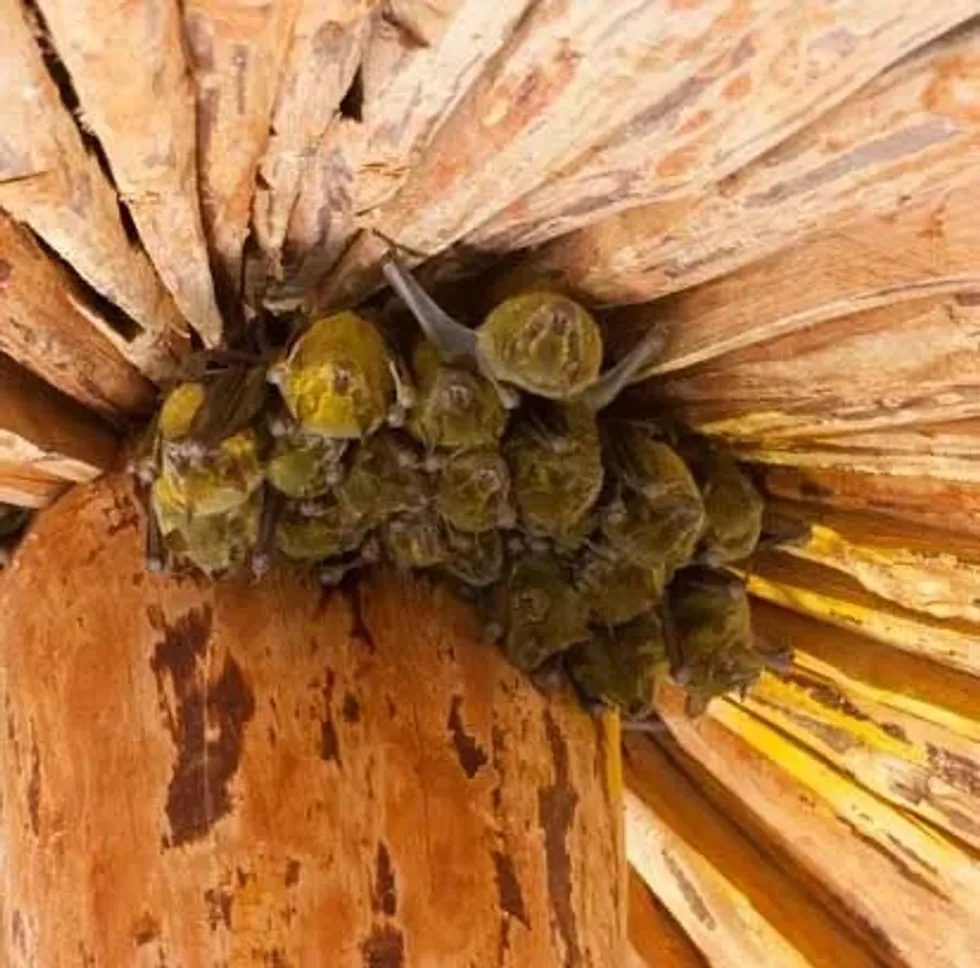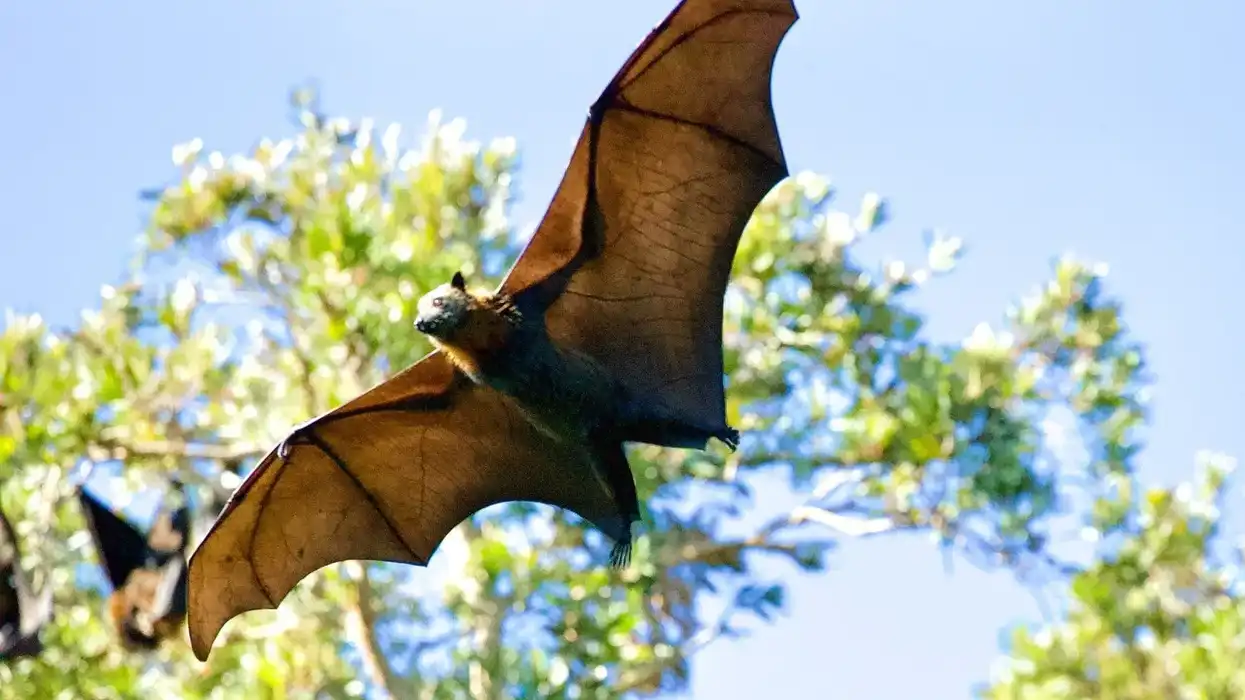When we talk about bats, what image comes to your mind? The image of a blood-sucking monster?
We get this image as its reputation has been tarnished by various spooky stories and shows like Dracula or Vampire Diaries. However, you would be astounded to learn that only three out of the 1300 species of bats are blood-sucking vampire bats. The rest of the species are harmless fruit-eating bats.
One such fruit-eating bat is the Jamaican fruit-eating bat or Artibeus jamaicensis. These bats play a crucial role in sustaining our ecosystem by spreading the seeds and pollen of various fruit plants.
About 300 species of plants depend on pollination by bats. Without these bats, we would have to say goodbye to figs, avocados, cacao, nuts, and more, because they are excellent at seed dispersal. Another way these bats help us is by keeping the population of insects under control by eating them.
So please go through our content to get rid of all your misconceptions about these fruit-eating bat species. If reading about such exotic species interests, you can also check our content on vampire bat facts and red bat facts.
Jamaican Fruit Bat Interesting Facts
What type of animal is a Jamaican fruit bat?
Artibeus jamaicensis is a fruit-eating bat species. This bat species belongs to the genus Artibeus and the family Phyllostomidae.
What class of animal does a Jamaican fruit bat belong to?
The Jamaican fruit-eating bat belongs to the class Mammalia. Like any other mammal, female bat species give birth to young ones and feed them on their milk till they are ready for the outside food.
How many Jamaican fruit bats are there in the world?
The information about the exact population of Jamaican fruit bats across the world is not available. But bats, in general, have about 1300 different species. In Jamaica alone, there are 21 different species representing six different families.
Where does a Jamaican fruit bat live?
The range of Jamaican fruit-eating bat (Artibeus jamaicensis) extends from central Mexican territories to Central America and into South America. The distribution range of Jamaican fruit-eating bat also extends throughout Netherlands Antilles, South of Tobago, Greater and the Lesser Antilles, Trinidad, and the Bahamas.
What is a Jamaican fruit bat's habitat?
These Jamaican fruit-eating bats live in places that range from sea level to elevations up to 7546 ft (2200m). Artibeus jamaicensis prefers rainforests, but it can also live in deciduous forests, human plantations, and dry forests. It can also roost in caves, buildings, hollow trees, and dense foliage.
These Artibeus species can make their own tents by modifying large and broad leaves, which they use temporarily to roost.
Who does the Jamaican fruit bat live with?
These Jamaican fruit-eating bats live in colonies or groups consisting of up to 14 females and one to two males. The males in the group protect the females and the young ones.
Dominant and strong males remain with the group for multiple years, but females can move among different groups, and single females are often taken into various harems. They roost on trees or in natural caves and live together to protect themselves from predators.
How long does a Jamaican fruit bat live?
The information available on the lifespan of these Jamaican fruit-eating bats is very little. However, some studies suggest that these species have a lifespan range of seven to nine years in the wild, while some say they can live for more than ten years in captivity.
How do they reproduce?
The mating system of Jamaican fruit-eating bats is polygynous ( single male mates with many females). Breeding in Jamaican fruit bats occurs twice a year.
The reproductive cycle of these Artibeus species is dependent on food abundance and the dry and wet seasons. Mating between the males and females can occur up to 25 days after the birth of the young one in March or April or July or August.
The gestation period lasts for about four months.
A single pup is born from a single female, but it can also give birth to twins on rare occasions. The female carries the young one and feeds it on its milk till the young one learns to fly.
The pup learns to fly in 31 - 51 days after its birth. They reach their adult size after 80 days, and both males and females reach their sexual maturity in about 10 months.
What is their conservation status?
The conservation status of this Jamaican fruit-eating bat species is that of Least Concern as per the IUCN Red List of Threatened species. Being mammals, the females give birth to one young pup at least twice a year on average.
This species lives in the natural tropical forest areas with plenty of fruit trees such as figs and other fruit plants to eat. Therefore, there are no significant threats to its population, and it can also adapt itself to live in buildings and human plantation areas.
Jamaican Fruit Bat Fun Facts
What do Jamaican fruit bats look like?

These Jamaican fruit-eating bats are about 0.88-0.13 lb (40-60 g) in weight with a wingspan ranging from 1.9-2.3 in (48-60 cm). Their fur is either black, brownish, or grayish.
In addition, this Jamaican fruit-eating bat has four distinct white stripes, one above and below each of the eyes. These leaf-nosed bats have a well-developed nose leaf and canines that enable them to eat various unripened fruits like figs and avocados.
The distinctive feature of the Jamaican fruit-eating bat is the absence of an external tail and the presence of a U-shaped interfemoral membrane.
How cute are they?
Whether a bat is cute or not depends on a person's perception. Some people find these bats cute with their features such as inquisitive eyes, majestic wingspan, and furry appearance. While some others dread these bats due to their noxious reputation build by various scary stories and myths. Some other bat species include the megabat and the ghost bat.
How do they communicate?
Jamaican fruit-eating bats use echolocation as the primary means of communication, but these Artibeus jamaicensis also use olfaction and sight to locate their food. These Jamaican fruit-eating bats emit low-intensity sound pulses through the nose leaf while its mouth is closed.
These sounds help Jamaican fruit bats to locate their food or find fruits such as figs in a thick forest.
Pups use repeated double notes to locate their mother in populated caves. They also make warning calls or distress calls to warn other fruit-eating bat species about approaching predators.
How big is a Jamaican fruit bat?
A Jamaican fruit-eating bat is about 2.5-3.3 in (6.5-8.4 cm) in length with a 1.88-2.6 in (4.8-6.6 cm) wide wingspan. In some sub-species, the males are found to be larger and heavier than the females.
How fast can a Jamaican fruit bat move?
Data on the exact speed with which the Jamaican fruit bat fly is unavailable. The speed greatly depends on the species of bats, and some species of bats can fly at a speed of 100 mph (161 kph). Jamaican fruit-eating bat can fly up to 6-9 miles (10-15 km) per night from their roost site to find fruit.
How much does a Jamaican fruit bat weigh?
Jamaican fruit-eating bat weighs around 1.4-2.11 oz (40-60 g). It is about 12 times smaller than the flying fox bat species, which weigh about 1.54-1.98 lb (698-898 g) .
What are their male and female names of the species?
There are no particular names for the male and female Jamaican fruit-eating bat species. They are known as male Jamaican fruit-eating bats and female Jamaican fruit-eating bats, respectively. However, a group of these bats is known as camps, clouds, or colony.
What would you call a baby Jamaican fruit bat?
A baby of Jamaican fruit bat is known as a pup. It feeds on mothers' milk till it is old enough to feed on solid fruits or seeds. Their parents protect these pups from various predators. They reach their adult size in about 80 days and are ready for breeding after about 10 months.
What do they eat?
As the name suggests, these Jamaican fruit-eating bats love to eat fruits, especially figs. They can also feed on pollen, seeds, flower parts, nectar, and insects when the availability of fruits is limited, like the dry season.
These leaf-nosed bats often use their modified molars to crush the unripened fruit and gulp the juices and throw away the pulp along with the seeds.
This way, this bat plays an important role ecologically by replenishing the forests all over the world. Bacteria aid digestion and this bat can digest the fruit in about 15 to 20 minutes.
Are they poisonous?
These leaf-nosed bats are not poisonous. But they may harbor many deadly viruses, which can create serious diseases when coming in contact with animals or human beings.
Would they make a good pet?
They act as reservoirs of various disease-causing viruses. So it is not advisable to raise them as pets because of the fear of these viruses spreading to the human population. It is best not to disturb them and leave them to their natural wild habitats.
Did you know...
The Jamaican bats are locally known as Jamaican rat bats. But the name is a misfit as these bats are related to primates more than rodents.
These bats have leaf-like structures by their noses that help them to smell around for various ripened fruits.
Jamaican fruit bats are the main reason for the diverse ecosystem and its sustainability in Costa Rica. They disperse the undigested fruit seeds across the forest and also disperse pollen of various plant species, which helps in replenishing the forests naturally.
Do Jamaican fruit bats bite humans?
These bats usually avoid humans, but they can bite in self-defense if provoked.
Are Jamaican fruit bats dangerous?
Yes, fruit bats are dangerous to humans as they harbor different types of harmful viruses. Nipah, Menangle virus, rabies, Marburg, Lyssavirus, Hendra, Ebola, and SARS diseases are few diseases that various bat species have spread. Some of these diseases have taken the form of pandemics and created havoc across the world, affecting each and every life.
They also destroy crops in human plantations, economically impacting human beings.
Here at Kidadl, we have carefully created lots of interesting family-friendly animal facts for everyone to discover! Learn more about some other mammals including hoary bat facts and Mexican free-tailed bat facts.
You can even occupy yourself at home by coloring in one of our free printable Jamaican fruit bat coloring pages.










